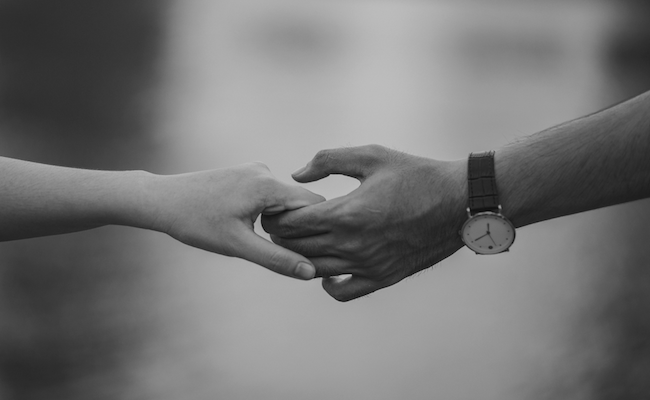The post is developed in partnership with BetterHelp.
Do you ever find yourself in a whirlwind of confusion within your relationships? Maybe you crave closeness yet fear it all at once. Or, perhaps, you feel a nagging sense of distance, even when surrounded by those you love. This push and pull, the longing and the unease, aren’t just personality quicks you can dismiss. There’s often a deeper reason.
Your relationship patterns are woven from threads sewn down long ago. Attachment theory offers a powerful lens to understand the invisible forces shaping how you connect with others and why your relationships feel the way they do.
Imagine building a foundation of security within yourself that enhances your bonds with those you love. Attachment theory isn’t just about diagnosing problems. It’s a pathway to healthier, more fulfilling connections.
This article will explore attachment styles in modern relationships. It will help you better understand your relational tendencies and discover the potential for positive change.
The Foundations of Attachment

Think back to your earliest memories — those blurry, dependency-filled years of childhood. We don’t enter the world with a sophisticated grasp of relationships. Instead, we learn how to connect through our interactions with primary caregivers, usually our parents. The way they responded to our needs, both physical and emotional, sculpted the beginnings of our “attachment style.”
These early bonds form a blueprint for how we expect love to look, feel, and function. Did your caregivers consistently provide comfort and reassurance? Or were they emotionally unavailable, perhaps unpredictable in their responses? This foundational experience subtly colors our approach to relationships far into adulthood.
Attachment theory isn’t a blame game. It doesn’t villainize parents or caregivers. Instead, it helps us understand the origins of our relational habits, providing compassion along with the tools for change.
Types of Attachment Styles
While there are nuances and variations, attachment styles generally fall into four main categories:
- Secure attachment: This attachment style is the gold standard. Securely attached individuals generally feel comfortable with intimacy and closeness. They trust others, have a healthy sense of self, and navigate conflict with relative ease.
- Anxious attachment: Those with an anxious attachment style often crave a deep connection but find themselves frequently experiencing insecurity. They may worry about being abandoned or fear their partners don’t truly love them. Seeking reassurance becomes a hallmark.
- Avoidant attachment: In contrast, avoidantly attached individuals tend to fiercely guard their independence. Emotional intimacy feels threatening, and vulnerability seems like a dangerous risk. They may withdraw or downplay their needs to maintain distance.
- Disorganized attachment: This style is often marked by inconsistency—a push-and-pull between wanting closeness and deeply fearing it. It can stem from early experiences where caregivers were a source of both comfort and fear.
Decoding Your Relationships Through an Attachment Lens

Do the relationship rollercoasters in your life start to make sense? The friend you constantly reassure, yet who can never quite soothe your anxieties? The romantic partner whose aloofness cuts deeply, triggering an old sense of unworthiness? Attachment theory helps us see these patterns aren’t random.
The beauty lies in its non-judgmental approach. You’re not “broken” for feeling the way you do. Your attachment style is a survival adaptation, born from your best attempts to navigate the world as you first understood it. And that same adaptability makes change possible.
Attachment-based therapy offers a safe space where a compassionate therapist guides you toward understanding the roots of your relational anxieties. In this place, you can explore new patterns of connection and begin to build that inner sense of security.
Online therapy platforms, such as BetterHelp, offer access to confidential support from licensed therapists who specialize in attachment theory. A trained professional can help you navigate your unique attachment style and how it impacts your relationships.
The Path to Healing and Secure Connection
So, does an insecure attachment style mean you’re doomed to relational misery? Absolutely not. The first step is awareness, and that’s what you’re gaining here. However, self-understanding is only part of the equation. Here’s where the journey gets more in-depth.
- Therapy: Therapists trained in attachment theory can provide a supportive space to explore your history, identify patterns, and practice healthier relationship skills.
- Self-compassion: Meet the anxious or avoidant parts of yourself with kindness. Shame only reinforces old patterns. Treat yourself the way you would a beloved friend experiencing similar feelings.
- Mindfulness: Practices like meditation or mindful journaling help you become aware of attachment triggers in real time. This awareness gives you space to choose a response instead of being hijacked by old, automatic reactions.
- Open communication: Learning to express your needs and fears in a way that fosters understanding (rather than conflict) is powerful. Find trusted loved ones to practice this vulnerability.
The Importance of Secure Attachment

It’s normal to have some mix of attachment styles — no one has a perfect childhood. But a predominantly secure attachment offers significant benefits, including:
- Greater relationship satisfaction: Secure individuals tend to experience healthier, more fulfilling bonds with partners, friends, and family.
- Stronger mental health: Secure attachment provides a buffer against anxiety and depression.
- Improved self-esteem: Feeling worthy of love fosters resilience and a positive self-image.
The good news is that change is possible. Even if you didn’t experience secure attachment as a child, you can build earned security through conscious effort.
What About Romantic Relationships?
Attachment theory offers an eye-opening view into our romantic lives. That heart-pounding, exhilarating (yet sometimes anxiety-inducing) stage of a new relationship? It’s often a time when our attachment styles come out in full force.
Do you feel smitten quickly or become preoccupied with the other person right away? These feelings might be telltale signs of an anxious attachment style. Or does the thought of commitment make you instinctively want to pull away? That could signal avoidant tendencies.
But don’t panic. Understanding your attachment style in relationships can empower you. It can lead to more honest communication with your partner and greater empathy for each other’s needs.
Takeaway
Attachment theory isn’t a magic wand to fix all of your relationships overnight. It’s more like a treasure map, providing clues on where to dig for a richer, more self-aware way of connecting with the people in your life. And honestly, what could be a more rewarding treasure than that?
You are so much more than a label like “anxious” or “avoidant.” Attachment styles are working models, not fixed destinies. With understanding, compassion, and the willingness to engage in your own growth, those models can gently shift. You deserve relationships that feel safe, nurturing, and truly satisfying. Attachment theory can light the way.



